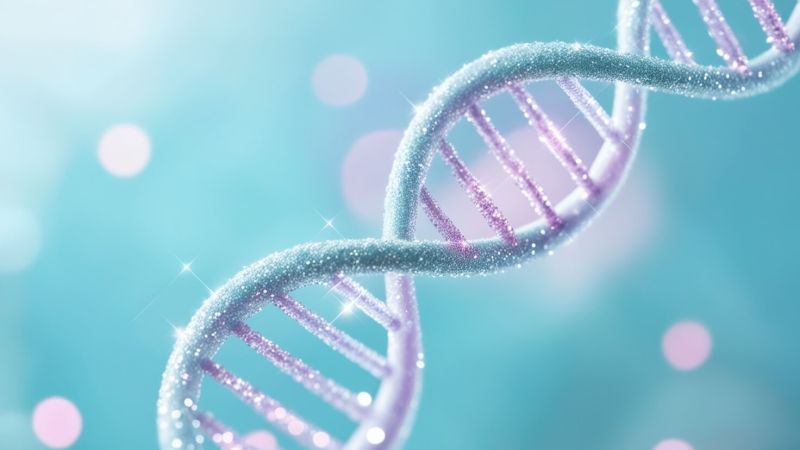
What are NAD Shots and Do They Really Work?
NAD shots have emerged as the latest trend in the wellness and longevity space, with celebrities and health influencers turning to these injections in hopes of boosting energy, slowing aging, and improving cognitive function. The treatment, which delivers nicotinamide adenine dinucleotide (NAD+) directly into the bloodstream, has sparked both excitement and skepticism in the medical community, raising questions about its effectiveness and scientific backing.
As interest in NAD+ therapy continues to grow, many are wondering whether these expensive treatments live up to their promise.
In this article, you’ll discover:
- What NAD shots are and how they work, including the key differences between intramuscular and subcutaneous injection methods
- The potential benefits and limitations of NAD injection therapy, from energy levels and cognitive function to its cellular absorption challenges
- How NAD shots compare to alternative methods like IV therapy and oral supplements, including costs, convenience, and effectiveness for boosting cellular NAD+ levels
What is a NAD Shot?

NAD shots are intramuscular injections that administer the essential coenzyme NAD+ directly into the bloodstream. The injectable form of NAD+ aims to bypass digestive absorption limitations of oral supplements, theoretically providing higher bioavailability. Medical professionals typically administer these shots in clinics or wellness centers as part of anti-aging or regenerative medicine protocols.
NAD injections rose to prominence through their initial use in addiction treatment centers in the early 2010s, followed by growing adoption in anti-aging medicine between 2015-2020. Research linking NAD+ decline to aging, combined with celebrity endorsements and social media coverage, helped mainstream these treatments.
The health and wellness industry’s marketing of NAD therapy as a cellular rejuvenation treatment, particularly through upscale clinics and medical spas, cemented its position as a premium intervention, despite limited clinical evidence for many claimed benefits.
The Process of NAD Injection Therapy

NAD+ injection therapy is administered via intramuscular or subcutaneous shots, offering a quicker alternative to NAD IV therapy. The process takes just minutes: a healthcare provider cleans the injection site (typically the arm, thigh, or gluteal area) and administers the NAD+ solution. Most protocols involve a series of injections over several days or weeks, with doses typically ranging from 100-200mg per shot.
Side effects are generally milder than IV therapy since the NAD+ is absorbed more gradually through muscle tissue. Patients may experience temporary soreness at the injection site.
Two Forms of NAD Injection

NAD injections come in two main forms: intramuscular (IM) and subcutaneous (SubQ). Both deliver NAD+ directly into your body, but the method you choose can affect how quickly and steadily the benefits kick in.
- IM injections go deep into a muscle, like your thigh, hip, or upper arm. Because muscles have a rich blood supply, this method allows NAD+ to absorb quickly into your system. People often choose this route for a rapid energy boost or sharper focus. The process itself is simple and fast, often taking just a few minutes.
- SubQ injections introduce NAD+ into the layer of fat just beneath your skin, creating a different pharmacokinetic profile. This tissue acts as a natural time-release system, gradually dispensing NAD+ into your circulation. It’s also a gentler method, with less discomfort than IM injections.
Regardless of the method chosen, professional medical supervision ensures proper administration, optimal dosing, and safe implementation of NAD+ therapy as part of your cellular health strategy.
Potential Benefits of NAD Shots

NAD shots are becoming popular for their potential to boost energy, sharpen mental clarity, and support healthy aging. However, the majority of studies show that the health benefits of NAD+ come from boosting NAD+ through supplementation rather than injection therapy specifically.
That said, if you’re dealing with symptoms of low NAD levels, such as fatigue, brain fog, or slower recovery, these shots might help replenish your NAD+ reserves. However, you should view them as one of many tools to reap the benefits of NAD+ listed below.
May Improve Energy Levels and Athletic Recovery
When you increase your NAD+ levels, you boost mitochondrial function, leading to more efficient energy production. A study published in Cell Metabolism found that boosting NAD levels improved muscle function and the creation of new mitochondria.1 Increasing your NAD+ levels can give your cells the energy boost they need to combat fatigue and recover more effectively after physical exertion.
May Boost Mental Clarity and Improve Cognitive Function
NAD+ also supports brain health by improving the health and function of mitochondria. It also reduces inflammation in brain cells, which can impair cognitive performance. A study published in the Journal of Neuroinflammation revealed that NAD+ supplementation helped protect mitochondria and reduce cellular stress,2 supporting your brain’s ability to repair itself and function more efficiently.
May Support Healthy Aging
Boosting NAD+ activates sirtuins,3 which are proteins that help protect against age-related diseases and promote longevity. By keeping NAD+ levels optimized, you may see improvements in skin elasticity, muscle strength, and overall vitality. Check healthy NAD+ levels for your age group to understand where you stand and take proactive steps to maintain your health as you age.
May Help With Mood Regulation and Stress
NAD+ boosts mitochondrial function and supports brain cell health, which can help you handle stress and keep your mood more stable. A study in Cell Metabolism found that NAD+ helps regulate neurotransmitters like serotonin,4 which directly impact your mood and emotional well-being. This makes it easier to stay calm and focused, even when things get tough.
Do NAD+ Injections Really Work?

While NAD+ injections may temporarily boost your NAD+ levels, the impact might be more limited than you expect. For instance, intramuscular injections introduce NAD+ into the bloodstream, but the large size of the NAD+ molecule presents a significant challenge – like trying to push a basketball through a tennis net, intact NAD+ molecules struggle to cross cell membranes efficiently.5 This limitation applies to both intravenous and intramuscular routes of administration.
There’s also evidence suggesting that direct exogenous NAD+ administration (via oral, IV, or intramuscular routes) is metabolically inefficient.6 The molecule needs to be broken down into its constituent parts before cellular entry, which may limit its direct effects.
Most studies demonstrating an ability to increase NAD+ levels7 rely on oral precursors like nicotinamide riboside (NR) or nicotinamide mononucleotide (NMN). These compounds are converted into NAD+ within cells,8 allowing for sustained increases in NAD+ levels. They are more readily absorbed and used by cells to produce NAD+ internally.
Key Takeaway: While NAD+ injections can boost blood levels quickly, precursor molecules like NMN and NR may be more effective at increasing NAD+ where it matters most – inside your cells.
Are There Any Side Effects of NAD+ Injections?

Most side effects of NAD+ injections are mild and temporary:
- Injection Site Reactions: Brief soreness, redness, or swelling where the injection was given
- Systemic Responses: Temporary flushing, mild headaches, or lightheadedness as your body adjusts to increased NAD+ levels
- Cardiovascular Effects: Some people experience a brief increase in heart rate during administration
Certain conditions require careful medical evaluation before starting NAD+ therapy:
- Heart conditions that could be affected by changes in cardiovascular function
- Kidney or liver disorders that might alter NAD+ metabolism
- Pregnancy or breastfeeding
- Active chemotherapy treatment or medications that interact with NAD+ pathways
- History of allergic reactions to injectable medications
How Often Can You Get NAD+ Injections?

The frequency of NAD+ injections depends on your goals and health needs. For an initial boost, you might start with 2-3 injections per week over a few weeks. Once your NAD+ levels are up, you can switch to a maintenance routine, usually one injection every 1-2 weeks.
For long-term support, you can opt for a monthly session to keep NAD+ levels steady. Your schedule can be adjusted based on how your body reacts, so it’s good to keep an eye on any changes or side effects as mentioned above. It’s always best to work with a healthcare provider to find the right balance for you.
Are NAD Injections Better Than NAD IV Therapy?

When comparing NAD injections to NAD IV therapy, both methods aim to boost NAD+ levels, but there are some key differences. NAD injections, whether intramuscular or subcutaneous, deliver NAD+ into the bloodstream more directly.
IV therapy also bypasses the digestive system entirely for faster absorption. However, like injections, it doesn’t guarantee a rise in cellular NAD+ without the addition of supplements or NAD precursor compounds.
In terms of price, NAD injections are much more affordable. They usually cost between $30-$60 per session, whereas NAD IV therapy can range from $150 to $500 per session. So, if cost is a factor, injections are the cheaper option, though IV therapy might be a better choice for those wanting a higher dose in a single treatment.
Injections are also much quicker, taking only about 10-15 minutes. NAD IV therapy can take anywhere from 1-2 hours. If you’re short on time, injections might be a better fit for your schedule.
Injections are also more convenient. They can often be done in a clinic or even at home, depending on the type. NAD IV therapy usually requires a visit to a medical facility, making it less ideal if you have limited time or mobility.
Both injections and IV therapy can raise NAD+ levels in the bloodstream, but neither has been proven to boost intracellular NAD+ without extra supplementation. While some people feel more energized or mentally clear after treatments, studies have not shown that either method dramatically improves energy, mental clarity, or overall health long-term.
In the end, the choice comes down to personal preferences and goals. If you’re after a quick, affordable option, NAD injections may be the way to go. But if you’re looking for a more intensive dose and don’t mind the time commitment, NAD IV therapy could work for you.
NAD Supplementation May Be a Better Option

NAD+ precursors like NMN and NR are compounds your body can convert into NAD+9. These precursors are available in supplement form and are often considered a more effective option for boosting NAD+ levels.
One of the main advantages of NAD+ supplements is their convenience and affordability compared to injections or IV therapy. You can take these supplements daily, and they are safe and well-tolerated10.
The sustained approach of daily supplementation offers distinct advantages. Rather than experiencing dramatic spikes in NAD+ levels followed by drops, precursor supplements maintain steady cellular NAD+ levels over time.11 This consistency supports ongoing cellular energy production and DNA repair processes, potentially offering more stable long-term benefits.
NAD+ precursors are also efficiently absorbed and converted by cells.12 These supplements can raise intracellular NAD+ levels, which is more effective than the extracellular NAD delivered by injection or IV. As such, NAD supplementation is more effective than IV therapy and injections for much the same reasons.
For optimal results, research suggests that combining different NAD+ precursors can enhance overall effectiveness. Our Vitality ↑® NAD+ Booster takes advantage of this synergistic approach, combining precise doses of NMN and nicotinamide (NAM) with complementary compounds D-ribose and creatine. This all-in-one formula targets multiple pathways of NAD+ production while supporting cellular energy systems, offering a convenient solution for those seeking to optimize their NAD+ levels naturally.
Before Choosing, Test Your NAD Levels

Making informed decisions about NAD+ optimization starts with understanding your current cellular NAD+ levels. Like any biomarker that influences cellular health, baseline NAD+ testing provides crucial data to guide your therapeutic approach and monitor treatment effectiveness.
Intracellular NAD+ testing reveals more than just numbers – it offers insights into your cellular health and helps determine which intervention might work best for your specific situation. Whether you’re considering injections, IV therapy, or oral supplementation, knowing your baseline levels allows you to track progress and adjust your protocol for optimal results.
Experience this scientific approach to NAD+ optimization with our AgingSOS® longevity panel, which precisely measures intracellular NAD+ levels alongside other key markers of cellular health. This comprehensive assessment helps create a targeted strategy for supporting your cellular energy systems and monitoring your progress over time.
Referenced Sources:
- https://www.cell.com/cell-metabolism/fulltext/S1550-4131(20)30190-X ↩︎
- https://jneuroinflammation.biomedcentral.com/articles/10.1186/s12974-021-02250-8 ↩︎
- https://pmc.ncbi.nlm.nih.gov/articles/PMC4112140/ ↩︎
- https://www.cell.com/cell-metabolism/fulltext/S1550-4131(19)30502-9? ↩︎
- https://www.aginganddisease.org/EN/10.14336/AD.2021.0523 ↩︎
- https://www.medrxiv.org/content/10.1101/2024.06.06.24308565v1.full ↩︎
- https://pmc.ncbi.nlm.nih.gov/articles/PMC9036060/ ↩︎
- https://pmc.ncbi.nlm.nih.gov/articles/PMC5842119/ ↩︎
- https://www.mdpi.com/2072-6643/15/2/445 ↩︎
- https://pubmed.ncbi.nlm.nih.gov/37335049/ ↩︎
- https://www.sciencedirect.com/science/article/pii/S2468501121000055 ↩︎
- https://pmc.ncbi.nlm.nih.gov/articles/PMC5842119/ ↩︎
Read More














